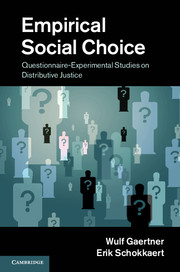35 results
Copyright page
-
- Book:
- Dementia and Society
- Published online:
- 26 May 2022
- Print publication:
- 09 June 2022, pp iv-iv
-
- Chapter
- Export citation
Contributors
-
- Book:
- Dementia and Society
- Published online:
- 26 May 2022
- Print publication:
- 09 June 2022, pp vi-vii
-
- Chapter
- Export citation
Additional material
-
- Book:
- Dementia and Society
- Published online:
- 26 May 2022
- Print publication:
- 09 June 2022, pp viii-viii
-
- Chapter
- Export citation
Chapter 14 - Social and Private Costs of Dementia
-
-
- Book:
- Dementia and Society
- Published online:
- 26 May 2022
- Print publication:
- 09 June 2022, pp 267-289
-
- Chapter
- Export citation
Chapter 5 - Quality of Life of Persons with Dementia
-
-
- Book:
- Dementia and Society
- Published online:
- 26 May 2022
- Print publication:
- 09 June 2022, pp 81-104
-
- Chapter
- Export citation
Index
-
- Book:
- Dementia and Society
- Published online:
- 26 May 2022
- Print publication:
- 09 June 2022, pp 290-304
-
- Chapter
- Export citation
Contents
-
- Book:
- Dementia and Society
- Published online:
- 26 May 2022
- Print publication:
- 09 June 2022, pp v-v
-
- Chapter
- Export citation
Preface
-
- Book:
- Dementia and Society
- Published online:
- 26 May 2022
- Print publication:
- 09 June 2022, pp ix-xii
-
- Chapter
- Export citation

Dementia and Society
-
- Published online:
- 26 May 2022
- Print publication:
- 09 June 2022
5 - Prioritarianism and Measuring Social Progress
-
-
- Book:
- Prioritarianism in Practice
- Published online:
- 09 June 2022
- Print publication:
- 21 April 2022, pp 204-259
-
- Chapter
- Export citation
10 - Empirical Research on Ethical Preferences: How Popular is Prioritarianism?
-
-
- Book:
- Prioritarianism in Practice
- Published online:
- 09 June 2022
- Print publication:
- 21 April 2022, pp 459-517
-
- Chapter
- Export citation
Belgium's response to the COVID-19 pandemic
-
- Journal:
- Health Economics, Policy and Law / Volume 17 / Issue 1 / January 2022
- Published online by Cambridge University Press:
- 05 July 2021, pp. 37-47
-
- Article
- Export citation
16 - Implementing the Capability Approach with Respect for Individual Valuations
- from Part II - Methods, Measurement and Empirical Evidence
-
-
- Book:
- The Cambridge Handbook of the Capability Approach
- Published online:
- 11 November 2020
- Print publication:
- 19 November 2020, pp 307-332
-
- Chapter
- Export citation
2 - Social Progress: A Compass
- from Introductory Chapters
-
-
- Book:
- Rethinking Society for the 21st Century
- Published online:
- 05 July 2018
- Print publication:
- 19 July 2018, pp 41-80
-
- Chapter
- Export citation
Towards an equitable and sustainable points system. A proposal for pension reform in Belgium
-
- Journal:
- Journal of Pension Economics & Finance / Volume 19 / Issue 1 / January 2020
- Published online by Cambridge University Press:
- 27 April 2018, pp. 49-79
-
- Article
- Export citation
Valuing Health, Daniel Hausman. Oxford University Press, 2015, xviii + 267 pages.
-
- Journal:
- Economics & Philosophy / Volume 32 / Issue 2 / July 2016
- Published online by Cambridge University Press:
- 31 March 2016, pp. 360-366
-
- Article
- Export citation
HOW TO INTRODUCE MORE (OR BETTER) ETHICAL ARGUMENTS IN HTA?
-
- Journal:
- International Journal of Technology Assessment in Health Care / Volume 31 / Issue 3 / 2015
- Published online by Cambridge University Press:
- 05 June 2015, pp. 111-112
-
- Article
-
- You have access
- HTML
- Export citation
3 - Traditional questions in social choice
-
- Book:
- Empirical Social Choice
- Published online:
- 05 January 2012
- Print publication:
- 22 December 2011, pp 29-95
-
- Chapter
- Export citation

Empirical Social Choice
- Questionnaire-Experimental Studies on Distributive Justice
-
- Published online:
- 05 January 2012
- Print publication:
- 22 December 2011
Contents
-
- Book:
- Empirical Social Choice
- Published online:
- 05 January 2012
- Print publication:
- 22 December 2011, pp v-vi
-
- Chapter
- Export citation



